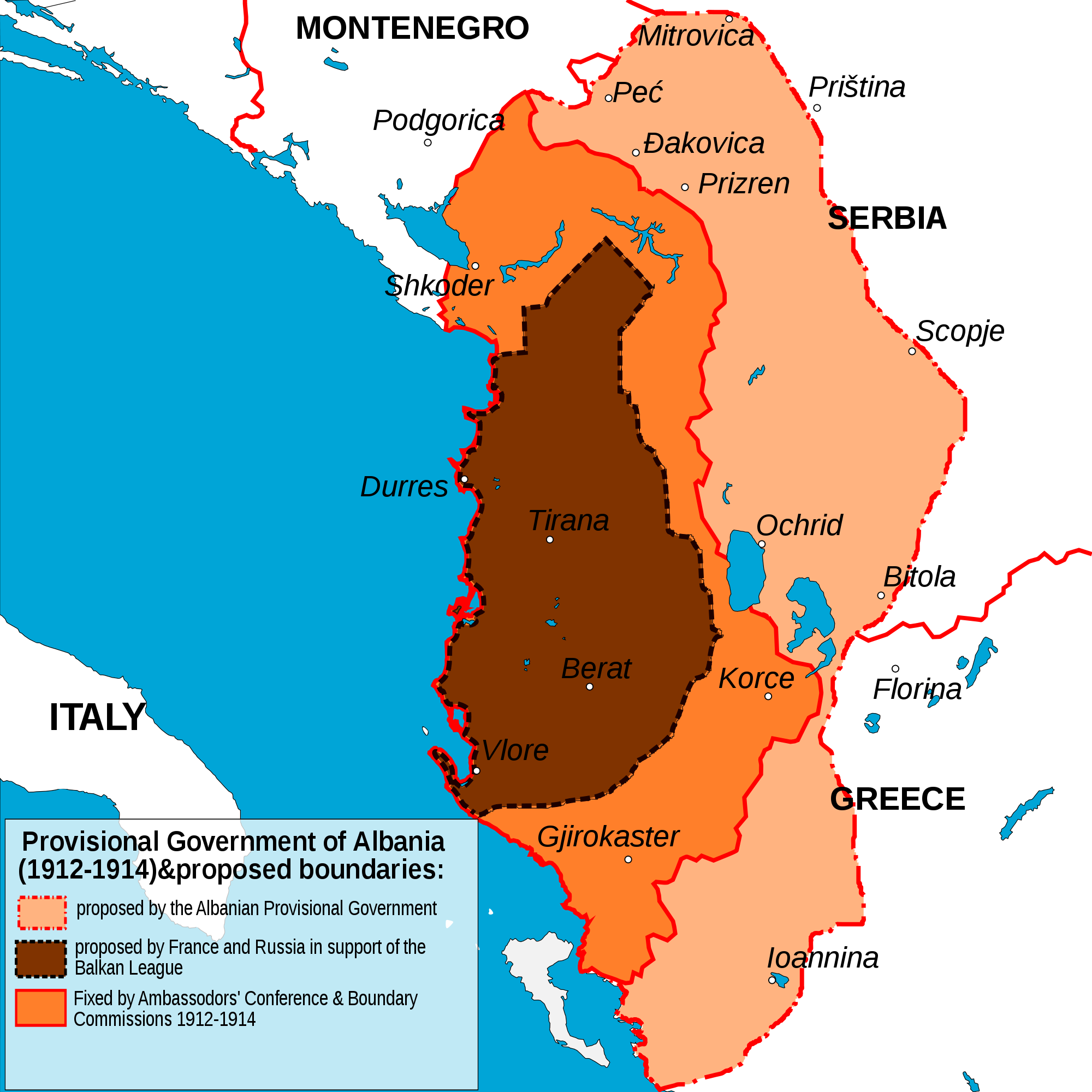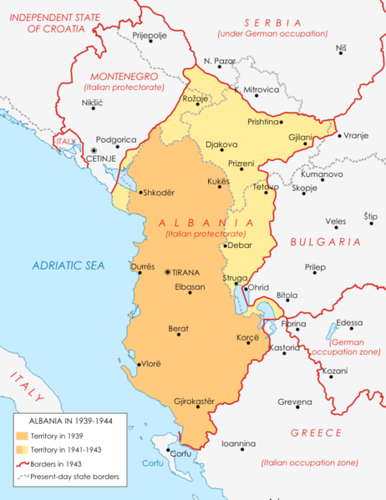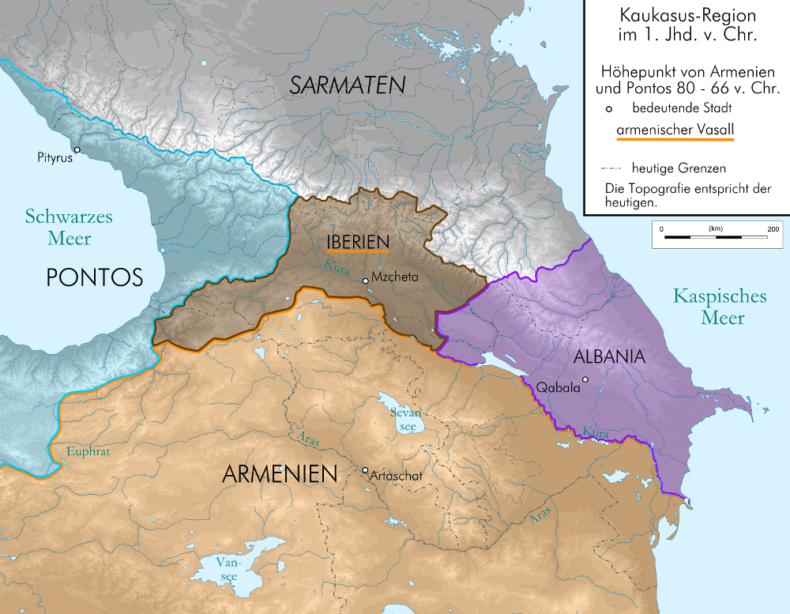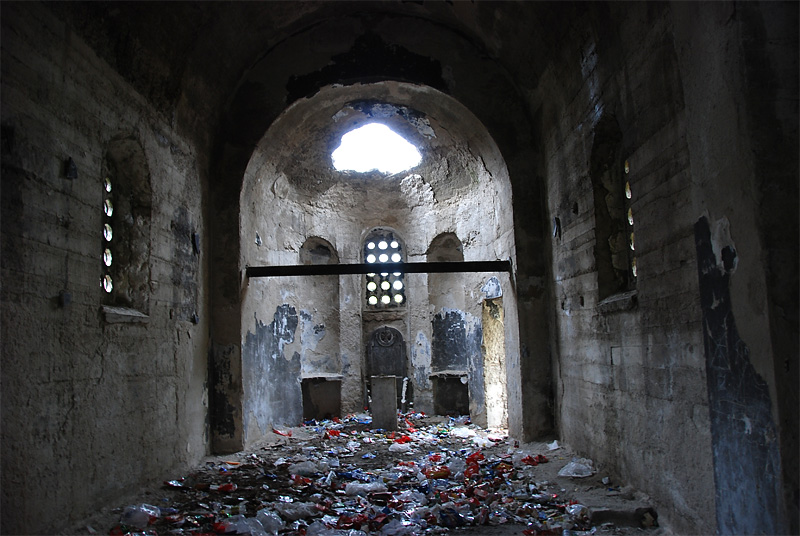
Views: 2883

The topic to be addressed in this text is the basic misconception on the question of the Balkan Albanian ethnogenesis and national identity that was framed by extremely geo-politically coloured the German-based “Illyrian” theory of the Albanian ethnic and cultural origin. This (quasi)theory, unfortunately, has very deep and negative regional political-security consequences during the last century.
The implementation of the “Illyrian” (quasi)theory of the Albanian ethnogenesis was accepted firstly by the Rilindja, (the renaissance) – the Albanian nationalistic and chauvinistic political movement in 1878–1913 for the sake to create the ethnically pure Greater Albania as a national state of all Balkan Albanians composed by self-interpreted all ethnographic and (quasi)historical “Albanian” territories at the expense of historical truth, justice as well as the Slavic and the Greek national interest.
The Illyrian tribes at the Balkans before the 1 century AD
The “Illyrian” (Quasi)Theory on the Albanian Balkan Origin
The so-called “Illyrian” (quasi)theory of the ethnic origin of the Albanians (created by the German and the Austrian scholars) became purposely the most popular theory of the Albanian nation’s derivation among the majority of the Albanian scholars, politicians, and intellectuals (see, for example [Marmullaku R., Albania and Albanians, London, 1975, pp. 5–9; Miridita Z., Istorija Albanaca (“Iliri i etnogeneza Albanaca”), Beograd, 1969, pp. 6–13; Historia e popullit Shqiptar, I, Prishtinë, 1969, pp. 155–161]). The crucial and concluding point of this (quasi)theory (in fact, it is actually a very highly politicized and above all non-provable hypothesis) is that the present-day Albanians are an authentic nation (ethnolinguistic group) of the Balkans, the oldest, an aboriginal and autochthonous ethnolinguistic group in this part of Europe. As a result, the Albanians’ South Slavic neighbours (the Serbs, Montenegrins, and Macedonian Slavs) in contrast to the “indigenous” Albanians are just “newcomers” to the Balkans (who arrived at this peninsula “only” at the turn of the 7th century AD) [Malcolm N., Kosovo: A Short History, New York, 1999, pp. 22−40]. Therefore, their ethnicity and nationality are allegedly much more recent than that of the Albanians. Subsequently, “historic rights” of the Balkan (quasi)autochthonous Albanian population on certain disputed Balkan territories (primarily between the Albanians and the South Slavs but also and between the Albanians and the Greeks) are stronger, more justifiable and historically more deeply rooted in comparison to the “historic rights” of the Serbs, Montenegrins or Macedonian Slavs. For that reason, it is expected that a “democratic” West will support the “justifiable” Albanian imperialistic territorial claims framed by the nationalistic and racist idea of a united Greater Albania (about the problem of relations between national identification and border identities, see [Wilson Th., Donnan H. (eds.), Border Identities. Nation and state at international frontiers, Cambridge, 1998]).
However, the Albanian national identity was created by the Austro-Hungarian authorities in the late 19th century and the very beginning of the 20th century. A Bulgarian scholar Teodora Todorova Toleva in her recent book on the creation of Albanian national identity published in 2012, cites unpublished documents from the Austrian State Archives (Haus-, Hof- und Staatsarchiv) in Vienna that demonstrate that the Austro-Hungarian authorities had a crucial influence on the creation of Albanian nationality in the years of 1896−1908 [Тодорова Толева Т., Влиянието на Австро–Унгария за създаването на албанската нация, 1896−1908, София, 2012]. This book is based on her Ph.D. dissertation defended at Barcelona University on September 16th, 2008 (see also [Schanderl D. H., Die Albanienpolitik Österreich-Ungarns und Italiens 1877−1908, Albanische Forschungen № 9, Wiesbaden: Otto Harassovitz, 1971]). It became today clear that such an Austro-Hungarian policy of creation of the Albanian national identity, nationalism, and finally independent state of Albania in 1912 was fundamentally pointed out against the Serbian, the Montenegrin, and the Greek national interests in the region.
Here, we have to make a short note of clarification that the “Montenegrins” should be considered from a cultural, religious, and ethnolinguistic point of view as the Serbs from Montenegro (Glomazić M., Etničko i nacionalno biće Crnogoraca, Beograd, 1988). Historical, political, religious, economic, and cultural relations between the Serbs from Montenegro (the Montenegrins) and the Serbs from Serbia are similar to those of the Germans from Austria (the Austrians) and the Germans from Germany. However, today 60% of the citizens of Montenegro claim, as a direct consequence of anti-Serb propaganda and policy of the Yugoslav communist government after the WWII, that they are ethnolinguistic “Montenegrins” different from the Serbs (on this problem see more in [Lazarević D., “Inventing Balkan Identities: Finding the Founding Fathers and Myths of Origin – The Montenegrin Case”, Serbian Studies: Journal of the North American Society for Serbian Studies, Vol. 25, No. 2, 2011 (2014), pp. 171−197]).
Nevertheless, shortly, according to the (quasi)theory of the Illyrian-Albanian (quasi)ethnolinguistic continuity, the Albanians are descendants of the ancient Balkan population – the Illyrians. The national name of the Albanians has to come from the name of one Illyrian tribe – the Albanoi. Furthermore, the tribal name, Albanoi, was the designation applied to the entire number of the Illyrian tribes around the Ionian Sea. However, for instance, contemporary German historiography does not mention the Illyrian tribal name Albanoi at all. The territory of Albania in the Greco-Roman time was populated only by one Illyrian tribe, the Taulantii. In addition, neighboring present-day Greek territories were settled by the Illyrian tribe Dassaretii, ancient Macedonia by the Paeones and Dardanes, and Kosovo-Metochia by the Scirtones [Westermann Großer Atlas zur Weltgeschichte, Braunschweig, 1985, pp. 38–39].
A grave place of a member of the Kosovo Liberation Army with a clear political message what they were fighting for during the Kosovo War of 1998−1999. That was a Greater Albania
A Linguistic Speculation
However, the proponents of the “Illyrian” (quasi)theory of the Albanian ethnographic origin built their scientifically unproved hypothesis mostly on the pure speculation that the modern Albanian language is directly descended from the ancient Illyrian one as well as that both of them belong to the same Indo-European language-group. Nevertheless, this claim is extremely disputed by contemporary linguistic science. The fact is that the Albanian language as a spoken language of the inhabitants of present-day Albania was not mentioned in any historical source until 1285 when it was for the first time recorded under this name in the manuscripts from Dubrovnik in which the language was referred to as lingua albanesesca. The name for the land – Albanon (the territory on which the Albanian language speakers live) is derived from the name of the language. This term for Albania, according to the supporters of this (quasi)theory, appears in several 13th-century Latin dictionaries, as well as in some of the Byzantine historical sources. The mediaeval sources referred to the region between Mache river on the north and Schumbe river on the south (both in present-day Albania) as Arbanon (or Arber) but without any connection with the Albanian ethnic name. The Serbs who were living there before the Albanians occupied this territory coming from Sicily in the year of 1043 called this region as Raban. According to the 2nd century Greek geographer Ptolemy, this territory was settled by the Albanoi tribe which was of the Illyrian origin. However, the name of the Balkan Albania and subsequently of the ethnic Albanians is not derived from Albanoi or Arbanon but rather from the town-name of Albanopolis or Albanum (Whitetown or Belgrade) [Деретић И. Ј. Антић П. Д., Јарчевић М. С., Измишљено досељавање Срба, Београд, 2009, p. 266].
A map of a Greater Albania as an unofficial political task to be realized by the Islamic fundamentalists of the Kosovo Liberation Army
As a matter of fact, before the Ottoman conquest of the Balkans, the population of Albania called themselves Arbërësh/Arbënesh and their country as Arbën/Arbër. The South Slavonic name for the people from Albania was the Arbanas. The Arnauts (Арнауташи) were Islamized and later on Albanized ethnolinguistic Serbs in Kosovo-Metochia, who still did not forget their original ethnicity [Цвијић Ј., Основе за географију и геологију Македоније и Старе Србије, III, Београд, 1911, pp. 1162−1166]. However, during the period of the Albanian national revival movement in the late 19th century, the Albanians called themselves Shqipëtarë and the country as Shqipëtaria. The name is most probably derived from the word shqipe what means “eagle” referring to the mountainous settlers of the highlands of Albania. However, this word probably comes from the ancient Dacian-Moesian language adopted by the Bulgarians who settled the Roman province of Moesia Inferior in 680/681. In the Bulgarian language “Shqiptars” means the “highlanders”. The popular nickname for the Albanians is the “Sons of the Eagle” and for Albania the “Land of the Eagle”. Two of the most important and powerful Albanian tribal units around 1900 (like today as well) were the Ghegs in the North Albania and the Tosks in South Albania. The Albanian population was (and is) divided with respect to religion. They are the Muslims (the overwhelming majority of all Albanians), the Roman Catholics, and the Eastern Orthodox (the latter are in fact Albanized ethnic Greeks). The last group occupies South-East Albania around the cities of Korçë and Gjirokastër (Argyrus) (for more details see [Hobhouse J. C. (Lord Broughton), Travels in Albania and other provinces of Turkey in 1808 and 1810, I, II, London, 1858; Skendi S., “Religion in Albania during the Ottoman rule”, Südost Forscungen, № 15, Münich, 1956; Hobsbawm E. J., Nations and Nationalism since 1789. Programme, Myth, Reality, Cambridge, 2000, p. 70]). A majority of the Christian Orthodox “Albanians” fought on the side of the Greeks against the Ottoman authorities and the Muslim Albanians in 1821−1829 for the Greek independence that was finally achieved in 1830. In fact, the real Albanians even today are only those of the Islamic denomination and only those Muslim Albanians fought for the independent state of Albania and today for a Greater Albania [Јевтић М., „Исламска суштина албанског сецесионизма и културно наслеђе Срба“, Национални интерес, 17/2, Београд, 2013, pp. 231−252].
It is interesting to notice that the “Illyrian” linguistic (quasi)theories of the Albanian and the South Slavic ethnogenesis have certain similarities with the “Thracian” linguistic theory of the ethnic origin of the Lithuanian nation that was championed by the 19th-century Lithuanian linguist and national worker Jonas Basanavičius. The theory was the result of Basanavičius’ linguistic research of the ethnogenesis of the 19th century Lithuanian nation. In his book Lietuviškai trakiškos studijos he developed the theory that part of the ancient Thracians emigrated from their Balkan homeland and ultimately settled in the eastern littoral of the Baltic Sea. Basanavičius claimed that these Thracian migrants from the Balkans were the predecessors of the modern Lithuanian nation. This theory was based on the fact that the ancient Thracian language was similar to the 19th-century Lithuanian language. Both of these languages belong to the family of the Indo-European languages. Basanavičius was working for years in Bulgaria and in order to prove his theory collected documents with the Thracian personal names, toponyms, and names for different kinds of drinks and then compared them to those of the Lithuanians. He claimed, for example, that the Lithuanian name Getas comes from the Thracian tribal name Getai [Basanavičius J., Lietuviškai trakiškos studijos, Shenandoah, PA, 1898, pp. 8–15; Seen A. E., Jonas Basanavičius: The patriarch of the Lithuanian national renaissance, Newtonville, MA, 1980]. According to Basanavičius, the name for the mediaeval Lithuanian capital Trakai was derived from the Greek name for the ancient Thracians, while some of the “Polish” names for the settlements (for instance, Kalisz in the region of Poznan) were not originally Polish: they were of the Lithuanian-Thracian origin. Basanavičius concluded that the ancient Thracians were of the same ethnicity as the Lithuanians [Basanavičius J., Lietuviškai trakiškos studijos, Shenandoah, PA, 1898, pp. 21−74].
The partisans of the “Illyrian” (quasi)theory of the Albanian origin speak in support of the school of thought on the origin and evolution of the Illyrians, which claims that the ancient Illyrians did not migrate to the Balkans. Instead, they were an autochthonous people in this part of Europe and even one of the oldest settlers in Europe. It has been suggested that the Albanians, as allegedly direct ethnic, political and cultural offsprings of the ancient Illyrians, are the original and indigenous inhabitants of the Balkans, even more, aboriginal than the ancient Greeks since the ancient Greeks migrated to the Balkans in two great migration waves: first, around 2000 BC, and secondly (Dorians), around 1200 BC [Oxford Dictionary of World History. The world’s most trusted reference books, New York, p. 253]. Therefore, the Albanian “historic” rights had to be much stronger, justifiable, and historically deeper in comparison to the South Slavic and Greek rights with respect to several Balkan territories of doubtful authenticity. In other words, the Albanians are seen as the “hosts” while their all neighbors are the “guests” in the Balkan Peninsula (for instance, see [Marmullaku R., Albania and Albanians, London, 1975, p. 6; Miridita Z., Istorija Albanaca (“Iliri i etnogneza Albanaca”), Beograd, 1969, p. 9]). The American mediaevalist John V. A. Fine simplified the crucial point of the (quasi)theory of the Illyrian-Albanian ethnical-cultural-political continuity, writing that: “…if the Illyrians were the ancestors of the Albanians, then the Albanians, as original inhabitants, have some historic right to that region and possibly rights to other regions which had been settled by Illyrians. And their Illyrian ancestry has been very important in Albanian nation-building myths” [Fine J., The Early Medieval Balkans, Ann Arbor, 1994, p. 10].
A Speculation on “Historical Rights”
The pivotal aspect (from a historical-political point of view) of the “Illyrian” (quasi)theory is the claim that the Illyrian-Albanian tribes withdrew from the vast areas of the Balkans settling in the Balkan coastal towns and in the mountains of present-day Albania, Epirus, Macedonia and Montenegro during the alleged Slavic invasion and occupation of the Balkans in the 6th and 7th centuries. However, according to this (quasi)theory, Kosovo-Metochia was the only fertile lowlands in the entire Balkan Peninsula, which was somehow not abandoned by the Romanized Illyrians-Albanians. As a result, the Albanians of the (quasi)Illyrian ethnic origin were and are considered as an autochthonous population of Kosovo-Metochia (in fact, Ancient Serbia) while the Slavonic Serbs-Montenegrins were looked upon as newcomers and occupiers in the region of Kosovo-Metochia. Shortly, the Illyrian-Albanian (quasi)historical and ethnic rights to Kosovo-Metochia – the land claimed by both the Albanians and their Serb neighbors – had to be some 15 centuries older than the Slavonic Serbian-Montenegrin historical and ethnic claims to the same territories, according to the (quasi)theory of the Illyrian-Albanian ethnogenesis (see, for instance [Noel M., Kosovo: A Short History, New York, 1999, pp. 22−40]).
This (quasi)theory emphasizes that in present-day North Albania an extensive settlement of old inhabitants emerged after the occupation of the Balkans by the more powerful South Slavonic tribes. This opinion is also shared by some Serbian scholars but who were or are the parts of the ruling anti-Serbian communist establishment in Serbia (for instance [Ferjančić B., Istorija Albanaca (“Albanija do XII veka”), Beograd, 1969, p. 29]. The champions of the “Illyrian” (quasi)theory frequently cited the words of Milovan Đilas, one of the leading Yugoslav communists after the WWII (and a war criminal) from Montenegro who wrote: “The Albanians are the most ancient Balkan people – older than the Slavs, and even the ancient Greeks” (cited from: [Costa N., Albania: A European Enigma, New York, 1995, p. 1]), or a French scholar Andre Malraux who wrote that “Athens was, alas no more than an Albanian village” [Malraux A., Anti-Memoirs, New York, 1968, p. 33].
There is particular emphasis on this part of the “Illyrian” (quasi)theory during the Balkan Wars of 1912–1913 as a way of refuting Serbia’s claims on the territory of the North Albania – a territory populated by the Serbs before 1043 when the Albanians became a Balkan people (as arrived from Sicily at that year). Furthermore, it is claimed that the Illyrian-Albanian population from the lowland of Kosovo-Metochia began to come under the Slavonic political-cultural influence, while the Illyrian-Albanian mountainous tribes from the Albanian highlands, who had fewer contacts with the Slavs, succeeded in maintaining their social system and cultural inheritance without alteration. The defenders of this (quasi)theory claim that the Byzantine province of Theme Dyrrhachium (which was established around 809 and covered entire present-day Albania’s territory, part of the North Epirus, the West Macedonia and the main part of the Montenegrin littoral with the area of Scodra lake) was inhabited by the Albanians who “caused the region to develop a special (Albanian) character” [Marmullaku R., Albania and Albanians, London, 1975, p. 8; Ferluga J, “Sur la date de la création du thème de Dyrrhachium”, Extrait des Actes du XII Congrès International des Etudes Byzantines, vol. 2, Beograd, 1964, pp. 83−92] (regarding the borders of the Byzantine Theme Dyrrhachium see [Engel J. (ed.), Groβer Historischer Weltatlas. Mittelalter, München, 1979, p. 14]).
A Greater Albania created by B. Mussolini and A. Hitler in 1941−1944 as a direct political inspiration for the present-day nationalistic projects on (re)establishment of a Greater Albania. It has to be paid special attention that the northern part of Kosovo-Metochia was not included into a Greater Albania as exclusively populated by the Serbs
Charles I of Naples (1227–1285) established his own feudal domain under the name of the Regnum Albanai, which is tendentiously considered in the Albanian historiography as the first Albanian national state, located on the territory of the Byzantine Theme Dyrrhachium. Its capital became the city of Dyrrhachium (Durazo in the Italian, Durës in the Albanian, or Drač in the Serbian). Therefore, the Albanian historiographic forgers claim that their nation has statehood rights even from the mid-13th century. However, it is known that the first national state of the Albanians was proclaimed only on November 28th, 1912 in Valona and became internationally recognized with the fixed borders after WWI.
According to the “Illyrian” (quasi)theory, the Albanians as one of the oldest European peoples, who had lived on the same territory since the early period of the Antiquity, deserved to be taken into account as one of the original inhabitants of Europe. They had to be descended from the Illyrians, i.e. from a special branch of the Indo-European peoples, just like the Greeks or the Armenians. Moreover, the Albanians were considered to have a language which reflects the quality, intensity, and period of important pre-Indo-European and Mediterranean (i.e., Pelasgian) influences. Their culture is different from neighboring ones in terms of religious tolerance, a common history of permanent resistance against any foreign power and subjugation, a partial (mediaeval) experience in independent statehood, a culture which is an amalgamation of the Illyrian-Balkan origins and the East-West European elements, a very old and distinctive folk culture, and ultimately a certain kind of “individualist toughness which, all together, singles the Albanians out of their immediate surroundings…” [Ismajly R., “Albanians and South-Eastern Europe (Aspects of Identity)”, Conflict or Dialogue. Serbian-Albanian relations and integration of the Balkans. Studies and Essays, Subotica, 1994, p. 269].
In accordance with this theory, the following territories in South-East Europe were and are inhabited by the Balkan Illyro-Albanians and as such, they should be defined as the territory of a united (Greater) Albania, as the national state of all Albanians, in the future: it would extend from the area of Scodra lake in Montenegro on the north to the Bay of Ambrazio in Greece on the south, and from the Adriatic Sea on the west, to the Treska river in Macedonia and Preševo, Medveđa, Bujanovac and Lebane districts in Serbia on the east (for example [Protest of the Population of Shkodra, Podgorica, Shpuza, Zhabjak, Tivar, Ulqin, Gruda, Kelmend, Hot and Kastrat addressed to the Ambassador of France in Istanbul against the annexation of Albanian lands by Montenegro (Shkodra, May 8th, 1878), Archives du Ministère des Affaires étrangères, Paris, Fund of the French Embassy at the Sublime Porte, Turkey, vol. 417, pp. 51–54, a supplement to the report № 96. Original in French. English translation in Pollo S., Pulaha S. (eds.), Pages of the Albanian National Renaissance, 1878–1912, Tirana, 1978, pp. 12–13; Contents of the coded telegram sent by Dervish Pasha from Shkodra (December 27th, 1880), Basbakanllik Arsive, Istanbul, Fund of Jilldiz esas evraki, 14 88/16 88 12. Original in Turkish. See figure 2.]). For the Albanian scholars, of course, any project of creation of a Greater Albania is only the myth and anti-Albanian propaganda by the Serbs and the Greeks [Kola P., The Myth of Greater Albania, New York, 2003]. Nevertheless, that was and is, in the eyes of supporters of the Illyrian (quasi)theory of the Albanian ethnogenesis, the exact territory of the Illyro-Albanians who have a 2000-year-old and continuous history and culture.
An Original Homeland of the Balkan Albanians
However, several written historical sources from different cultural environments (Byzantine, Arab…) clearly say that the Albanians arrived in the Balkans in 1043 from the East Sicily and that their original homeland was in the Caucasus Albania which is mentioned in several ancient sources as an independent state with its own rulers. The Caucasus Albania was neighbouring the Caspian Sea, Media, Iberia, Armenia and Sarmatia Asiatica. The most important source which mentions that the Balkan Albanians came from the East Sicily in 1043 is the Byzantine historian Michael Ataliota [Ataliota M., Corpus Scriptorum Historiae Byzantine, Bonn: Weber, 1853, p. 18]. This very historical fact is even recognized and by some Albanian historians like Stefang Pollo and Arben Puto [Pollo S., Puto A., The History of Albania, London-Boston-Hebley, 1981, p. 37].
The Ancient Caucasus Albania as the original homeland of the present-day Balkan Albanians
The First League of Prizren (1878−1881) and a Greater Albania
A real aim of the Albanian national movement Rilindja (1878–1913), as the foundation of all later and up today Albanian geo-political and megalomanic territorial claims, was not, as it is officially presented by both the German and the Albanian historiographies, the Albanian liberation from the Ottoman rule and the creation of a national Albanian state whose borders would encompass all self-proclaimed „Albanian“ territories. However, the political aim of the movement was to preserve the existence of the Islamic Ottoman Sultanate as the movement itself had an extremely strong Islamic connotation but to create within the Sultanate an autonomous province of the Islamic Greater Albania. Subsequently, any later project up today on united Albanian national state is based on the Islamic framework that is, for instance, the foundation of the present-day „independent“ Republic of Kosovo (better to say the Islamic Kosovostan Caliphate) which is, in fact, nothing else but just a province of a Greater Albania with the capital in Tirana.
A map of a megalomanic project of a Greater Albania in a form of the United States of Albania
The political and military arm of the movement became the First League of Prizren (1878−1881) which established its own organizational structure in all of the territories considered to be parts of a united ethnic state of all Albanians (see, for example [The Activity of the Albanian League of Prizren in the vilayet of Kosova (1880), Consul-General Blunt to the Marquis of Salisbury, Public Record Office, Foreign Affairs, London, № 195/1323; The British Museum, London, Fund of Accounts and Papers (43), 1880, LXXXII, 82, 77–78]. The document is published in [Rizaj S., The Albanian League of Prizren in British Documents, 1878–1881, Prishtina, 1978, pp. 279–280]). The League launched the motto: “Feja e shqyptarit asht shqyptaria” (“The Religion of the Albanians is Albanianism”) for the very sake of overcoming the Albanian religious diversity and separation. This movement has been the crucial political force of the Albanians and the pivotal point for defining the national identity and development of the Albanians but based on the domination of the Muslim Albanian corpus, the Albanisation of non-Albanians in controlled areas and ethnic cleansing of the Slavs and the Greeks within the territories framed to be the parts of a Greater Albania.
The First League of Prizren (Lidhja e Prizrenit) was established in the town of Prizren in Metochia for the very political purpose: to claim that this old Serbian town is in fact an Albanian one. However, Prizren was at that time consisted of 70% Serbs and 30% Albanians. The town was the capital of Serbia in the 14th century (called by the Serbs as Tsarigrad that is “Imperial Town”). A Serbia’s royal and later on imperial court and the Serb Christian Orthodox cathedral (саборна црква), built-in 1307, were located in Prizren. However, today, only several Serbian houses remain in the town of Prizren. It has to be noticed that Metochia is a term of a Greek origin (μετόχι) and it refers to the land owned by the Orthodox church. As the Serbian medieval rulers granted huge portions of the land between the towns of Peć, Prizren, Mitrovica and Priština to the Serbian Orthodox Church, the western part of Kosovo came to be called Metochia [Батаковић Т. Д., Косово и Метохија у српско-арбанашким односима. Друго допуњено издање, Београд, 2006, p. 10]. This province, in general, is called by the Serbs, Kosovo-Metochia, while the Albanians purposely refer to it only as Kosova/Kosovë. However, the word Kosovo/Kosova/Kosovë is of a Slavic origin (kos = type of eagle), but not of the Albanian, what means that the Albanians even do not have their own (the Albanian) name for Kosovo. The Albanians, of course, do not mention Metochia at all as the term from a historical perspective is in direct connection only with the Serbs, their church and the state.
The Islamic Kosovostan Caliphate and a Greater Albania
A present-day brutal policy of barbaric extermination of the Christian Orthodox Serbs from Kosovo-Metochia, that is transformed into the Islamic Kosovostan Caliphate from June 1999 onward, followed by systematic destruction of their Christian cultural heritage committed by the Sunni Muslim Albanians (who are of the same Islamic denomination as the Islamic State’s Jihadists in the Middle East) is just a part of such historical project established in 1878 with a direct sponsorship by at that time the Ottoman government. The German-established false theory of the Illyrian-Balkan origins of the Albanians is just serving as the formal academic basis for the geo-political realization of the racist project of a Greater Albania.
A Serbian Orthodox church of Samodrezha in Kosovo-Metochia destroyed by the Albanian Islamic fundamentalists and Jihad soldiers of the Kosovo Liberation Army in March 2004
Nevertheless, objective historiography based on various historical sources knows well that the Balkan Albanians are originating in the South Caucasian Albania that was both a region and the state at the time of Antique and the early Middle Ages covering the present-day territories of Azerbaijan and Dagestan. The Caucasus Albanians were even not the Indo-Europeans as the Balkan Illyrians were and linguistically have nothing to do with any Balkan indigenous ethnic group. The sources, moreover, are calling the Slavs as the Illyrians including primarily the Serbs but not the Albanians who became re-settled by the Arabs in the 8th century from the Caucasus to Arabia and Syria and further to Sicily wherefrom they arrived at the territory of present-day Central Albania in 1043 as a part of the Byzantine rebellious army commanded by the Sicilian general (strateg) George Maniac. Subsequently, the Balkan Albanians are in fact the youngest but not the oldest present-day ethnonation in the region.
Surely, a territory of Kosovo-Metochia or the Ancient Serbia (from the Italian mediaeval sources a Vecchia Servia) became the first (quasi)”Albanian” land incorporated into the framework of a Greater Albania – a project based on both a racist ideology of (quasi)”Illyrian” origin of the Balkan Albanians and ideology of the Islamic fundamentalism practiced today by the Islamic State in the Middle East. Moreover, Kosovo-Metochia became transformed into the first Europe’s Islamic fundamentalist “stan” state that was and is directly sponsored by Washington and its NATO’s and EU’s quislings. The Kosovo War in 1998−1999 was primarily the NATO’s prototype for the next wars of globalization [Collon M., Media Lies and the Conquest of Kosovo. NATO’s Prototype for the Next Wars of Globalization, New York, 2007] used by the terrorist Kosovo Liberation Army to separate Ancient Serbia from its historical roots and to include it as a Kosovostan into an Islamic Greater Albania.
In conclusion, the so-called “Illyrian” theory of the Albanian ethnogenesis, that claims that the present-day Balkan Albanians originate in the ancient Balkan Illyrians who are therefore their ancestors, is purely based on unscientific speculations as up today there is simply no a single direct material, archival or linguistic proof to support this (quasi)theory which is (mis)used as such for the realization of geo-political anti-Slavic, anti-Greek and anti-Christian Orthodox geo-political aims in the region.
Note:
This text is a critical contribution to the next updated and revised edition of the book:
Malcolm N., Kosovo: A Short History, New York, 1999.
 Prof. Dr. Vladislav B. Sotirovic
Prof. Dr. Vladislav B. Sotirovic
www.global-politics.eu/sotirovic
sotirovic@global-politics.eu
© Vladislav B. Sotirovic 2017
Origins of images: Facebook, Twitter, Wikimedia, Wikipedia, Flickr, Google, Imageinjection, Public Domain & Pinterest.
Read our Disclaimer/Legal Statement!
Donate to Support Us
We would like to ask you to consider a small donation to help our team keep working. We accept no advertising and rely only on you, our readers, to keep us digging the truth on history, global politics, and international relations.
 The Kosovo Liberation Army in 1999: Fighting for a Greater Albania
The Kosovo Liberation Army in 1999: Fighting for a Greater Albania
















